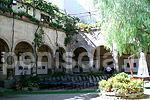
« | Home | Accommodation | Restaurant | History | What to See | Itineraries | Cooking tips | Map | Photo Gallery
| discovery SORRENTO | ||||||||||||||||||||||||||||||||||||||||||||||||||||||||||||||||||||||||||||||||||||||||||||||||
| Cloister of St. Francis | ||||||||||||||||||||||||||||||||||||||||||||||||||||||||||||||||||||||||||||||||||||||||||||||||
|
Roma Hotel - Firenze Hotel - Napoli Hotel - Sorrento Hotel Amalfi Hotel - Ravello Hotel - Positano Hotel - Praiano Hotel |

